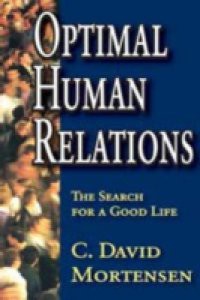This volume deals with the human desire to live the good life, defined as seeking that which "is good, optimal, or ultimately desirable." While there may be different ways of achieving this goal, the pathways are similar in some ways. In exploring the ways in which these paths cross, Mortensen asserts that an ability to sustain optimal human relations--that is, healthy communication, interpersonal compatibility, and prosocial influence--is a standard against which the good life can be measured.
Optimal Human Relations explores the favorable conditions for human beings to live the best possible way of life imaginable; it both argues the case for and documents recent advances in the study of social influences on everyday life.
Social influences help to develop an expansive sense of intrinsic motivation in daily encounters with others. While optimal relations are not easily achieved or maintained, it is through healthy relationships that one may pursue pleasure and happiness--even meaning, importance, and significance with valued companions. The cultivation of physical, emotional, intellectual, and spiritual health through these relations generates an enhanced sense of well-being, growth, and maturity. Mature individuals are more likely to maintain optimal relations by counting daily blessings more than lamenting routine burdens.
This inspirational conception of "the good life" invites productive inquiry into the conditions responsible for the pursuit of optimal conditions, fulfilled expectations, and a rich, vital, way of life. It is through this lens that Mortensen measures the good life, pointing to these aspects of human communication as a litmus test of the relative importance of individualistic and collective orientations. Along the way, the reader discovers who and what we are in relation to the quality of the world in which we reside alongside those who journey with us.

